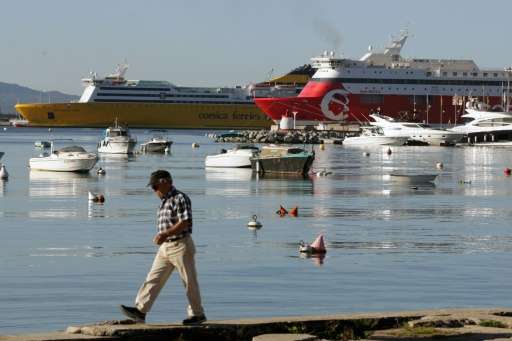'Once-a-century' climate hazards will hit Europe yearly: study

By mid-century, pockets of southern Europe will face at least one severe climate hazard every year of the scale now occurring only once a century, according to a new study.
And by 2100, Europe's entire Mediterranean seaboard will be confronted annually with extreme droughts, coastal floods or heatwaves, said the study, published this week in the journal Climatic Changes.
Some hotspots will be hit every year by two or more such formerly one-in-hundred-year hazards, which also include wildfires, river floods and windstorms, the researchers found.
"This should be a warning to governments and institutions tasked with preparing solutions and adaptation strategies," said lead author Giovanni Forzieri, a scientist at the European Commission's Institute for Environment and Sustainability in Ispra, Italy.
The projections, he said, were based on climate models which assume Earth's surface temperatures will rise by about two degrees Celsius (3.6 degrees Fahrenheit) above the pre-Industrial Era benchmark by mid-century.
This is roughly half-way between the most optimistic and most pessimistic scenarios for how quickly humanity will be able to curb the greenhouse gases driving dangerous global warming.
The world's first global climate pact—forged in Paris in December and signed on Friday by more than 170 countries at the United Nations in New York—calls for capping temperatures at "well below 2 C".
But scientists say that at current rates of fossil fuel consumption, Earth may be on track for an increase of 4 C, or higher.
To date, studies projecting the frequency of future climate hazards have looked at them by category, such as flood or drought.
There was no "comprehensive picture on how multiple climate extremes will evolve during the 21st century," Forzieri told AFP at a meeting of the European Geosciences Union in Vienna, where he presented the findings.
'Double threat'
Part of the problem is simply the different yardsticks used to measure each threat: temperature for heatwaves, water depth or area affected for floods, time periods for drought.
Working with a dozen specialists from research centres across the continent, Forzieri and a team created a unified "climate hazard index".
Heatwaves and drought are the biggest threats, with coastal flooding and wildfires also a serious concern, the data showed.
Spain, Turkey, Italy and southern France are the countries set to face the highest concentration of potential disasters.
"In Spain, you will see at least two hazards every year by 2080 that—in the current climate—only show up once in 100 years," said Forzieri.
Northern Europe, he pointed out, may benefit from global warming, especially in the second half of the century, due to longer growing seasons.
The study focused on the size and frequency of natural hazards, but does not measure the risk to human societies.
Risk also takes into account the exposure of people and property, and how well prepared countries are to cope with natural calamities.
© 2016 AFP



















